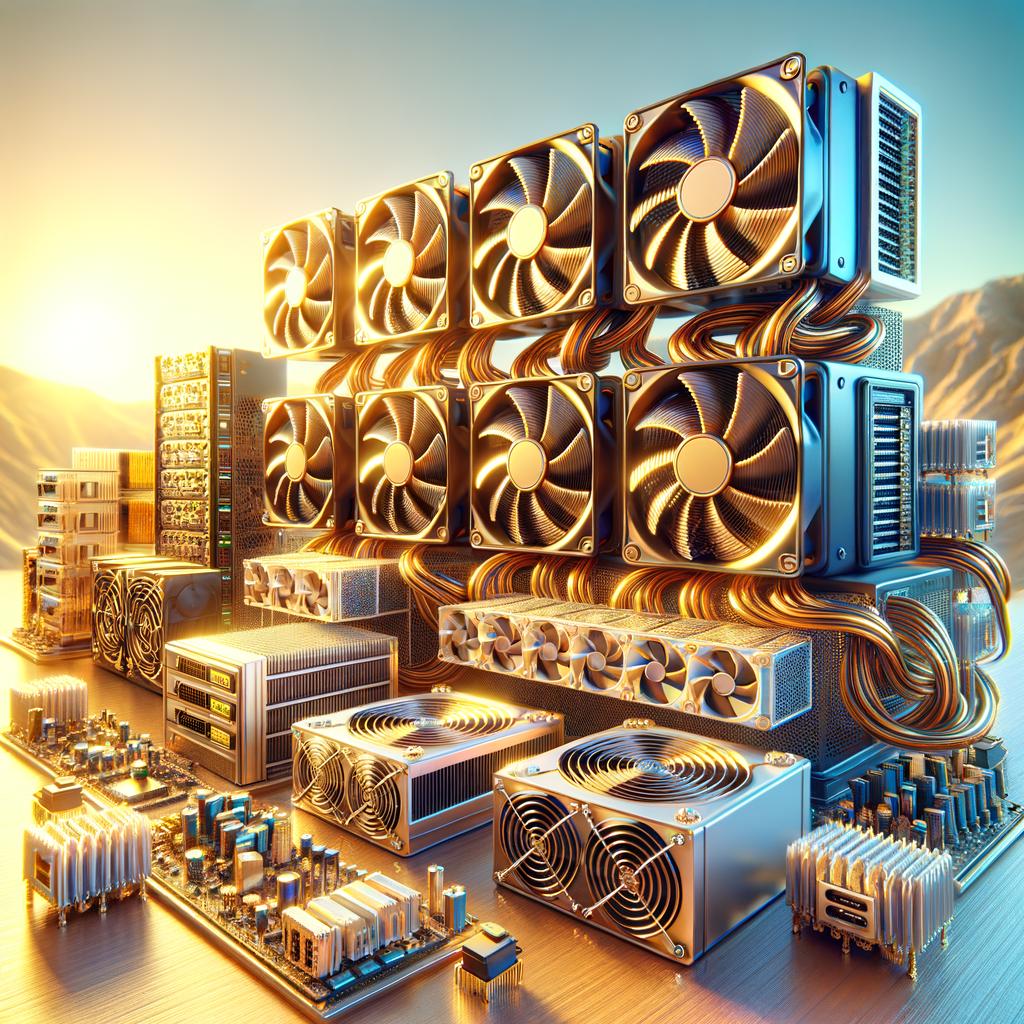Bitcoin Mining Hardware Cooling Solutions: Advanced Technologies
Table of contents
- Understanding the Importance of Cooling in Bitcoin Mining
- Air Cooling: A Tried-and-True Method
- Liquid Cooling: The Next Level of Efficiency
- Phase Change Cooling: Innovative Technology
- Thermoelectric Cooling: Harnessing the Power of Peltier Effect
- Choosing the Right Cooling Solution for Your Mining Operation
- Conclusion: Optimizing Performance through Advanced Cooling Solutions
In the world of cryptocurrency, Bitcoin mining stands out as a significant endeavor that requires substantial computational power. As miners strive to solve complex algorithms and validate transactions, the hardware they use generates a considerable amount of heat. Without adequate cooling solutions, this heat can lead to reduced performance, hardware failure, and ultimately financial loss. Understanding advanced cooling technologies has become essential for miners looking to ensure their operations run smoothly and efficiently. This article will explore various cooling solutions that can optimize Bitcoin mining hardware performance and enhance longevity.
Understanding the Importance of Cooling in Bitcoin Mining
Cooling plays a critical role in maintaining the efficiency of Bitcoin mining rigs. As temperatures rise, the performance of mining hardware can degrade, resulting in slower hash rates and increased energy consumption. High temperatures can also lead to more frequent hardware failures, costing miners both time and money. Implementing effective cooling solutions not only protects the equipment but also maximizes profitability by sustaining optimal performance levels.
Air Cooling: A Tried-and-True Method
Air cooling remains one of the most common cooling techniques used in Bitcoin mining operations. This method utilizes fans to circulate air around the mining hardware, dissipating heat effectively. Miners can enhance air cooling by ensuring proper ventilation in their mining rigs. Utilizing high-quality fans, strategically placing them, and maintaining a clean environment can significantly improve cooling efficiency.
While air cooling is a cost-effective solution, it does have limitations. During peak mining seasons or in warmer climates, air cooling alone may not suffice. Still, it serves as a foundational cooling method for many miners.
Liquid Cooling: The Next Level of Efficiency
Liquid cooling systems have gained popularity among serious miners seeking more efficient heat management. This technique involves circulating a coolant, typically water or a specialized liquid, through the mining hardware to absorb and dissipate heat. Liquid cooling systems can be more effective than air cooling, as liquids have a higher thermal conductivity and can absorb heat more efficiently.
One of the most advanced forms of liquid cooling is immersion cooling, where mining hardware is submerged in a non-conductive liquid. This method allows for unparalleled heat dissipation, reducing the risk of overheating. Immersion cooling systems can also reduce noise levels, creating a quieter mining environment.
Phase Change Cooling: Innovative Technology
Phase change cooling is an innovative technology that has recently gained traction in the cryptocurrency mining community. This method utilizes the phase change of a refrigerant to absorb heat from mining hardware. When the refrigerant evaporates, it absorbs heat, and when it condenses, it releases that heat away from the hardware.
Phase change cooling systems can be highly effective, as they can maintain lower temperatures even in high-performance mining scenarios. While this technology is more complex and often more expensive than traditional cooling methods, it offers significant advantages in terms of heat management and efficiency.
Thermoelectric Cooling: Harnessing the Power of Peltier Effect
Thermoelectric cooling, based on the Peltier effect, involves using semiconductor materials to create a temperature differential. When an electric current passes through the semiconductor, one side cools down while the other side heats up. This technology can be employed to cool specific components of mining rigs, such as processors and GPUs.
Although thermoelectric coolers are often used in conjunction with other cooling methods, they offer a unique advantage in targeted cooling. Miners can use this technology to focus on the hottest components of their rigs, optimizing performance without the need for extensive cooling systems.
Choosing the Right Cooling Solution for Your Mining Operation
Selecting the appropriate cooling solution involves considering various factors, including the scale of the mining operation, budget, and environmental conditions. While air cooling may be sufficient for smaller setups, larger operations may benefit from investing in advanced liquid or phase change cooling systems.
Miners should also evaluate the total cost of ownership for each cooling solution. While some may have higher upfront costs, their efficiency and longevity can offset these expenses over time. Assessing energy consumption and maintenance needs is crucial in making an informed decision.
Conclusion: Optimizing Performance through Advanced Cooling Solutions
In the competitive landscape of Bitcoin mining, staying ahead requires not just powerful hardware but also effective cooling solutions. Advanced technologies like liquid cooling, phase change cooling, and thermoelectric cooling can significantly enhance the performance and longevity of mining rigs. By investing in the right cooling systems, miners can protect their equipment, optimize efficiency, and ultimately improve their bottom line. As the cryptocurrency market continues to evolve, keeping an eye on emerging cooling technologies will be essential for those looking to maintain a competitive edge.







